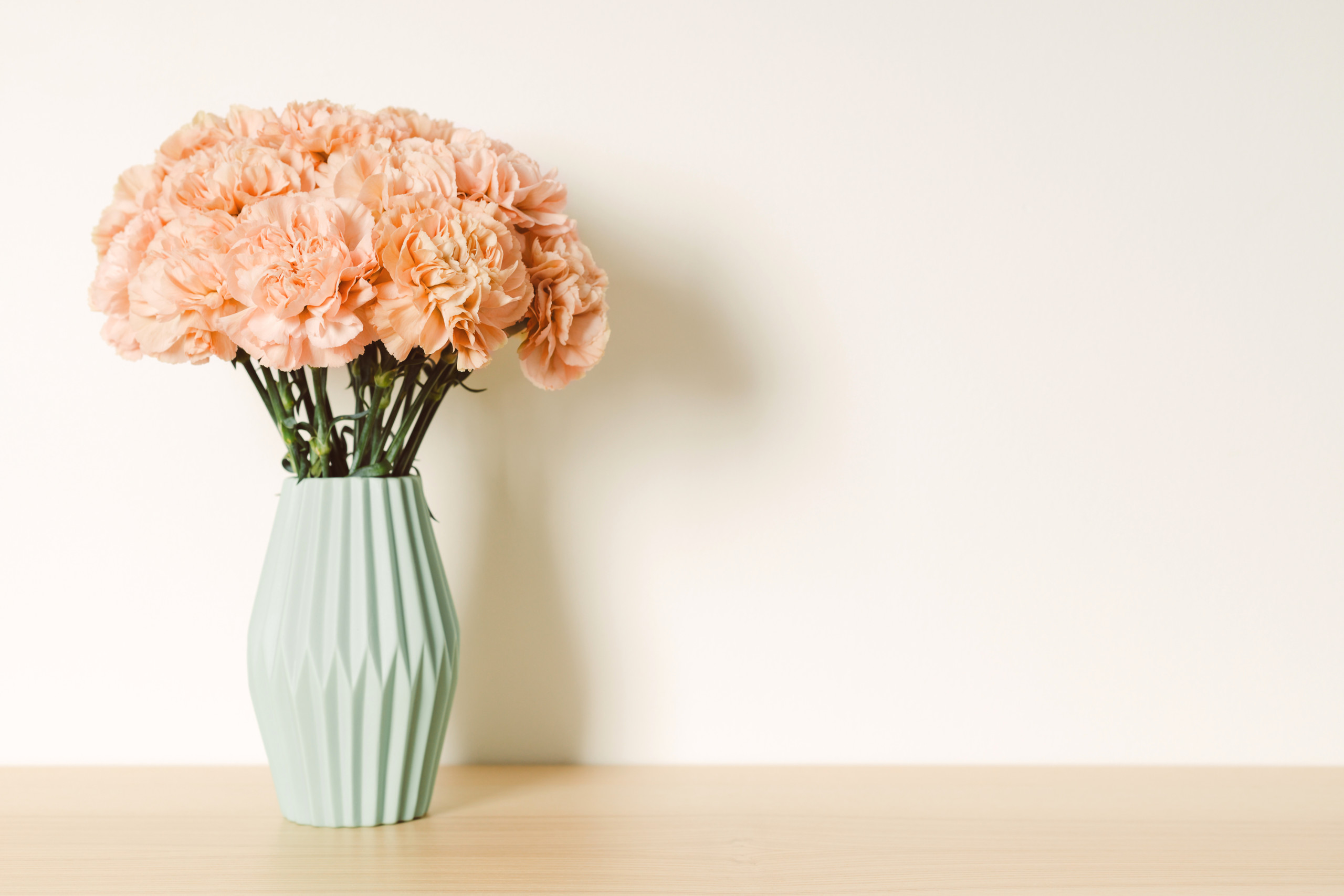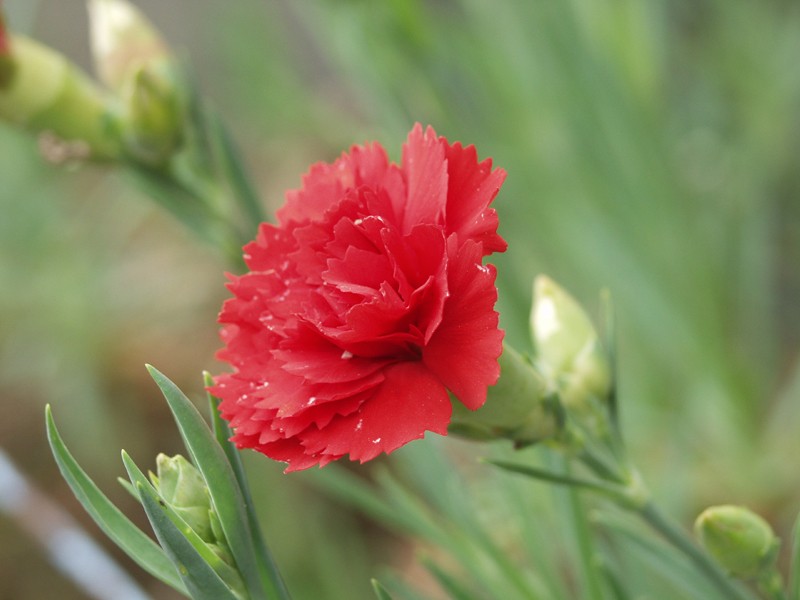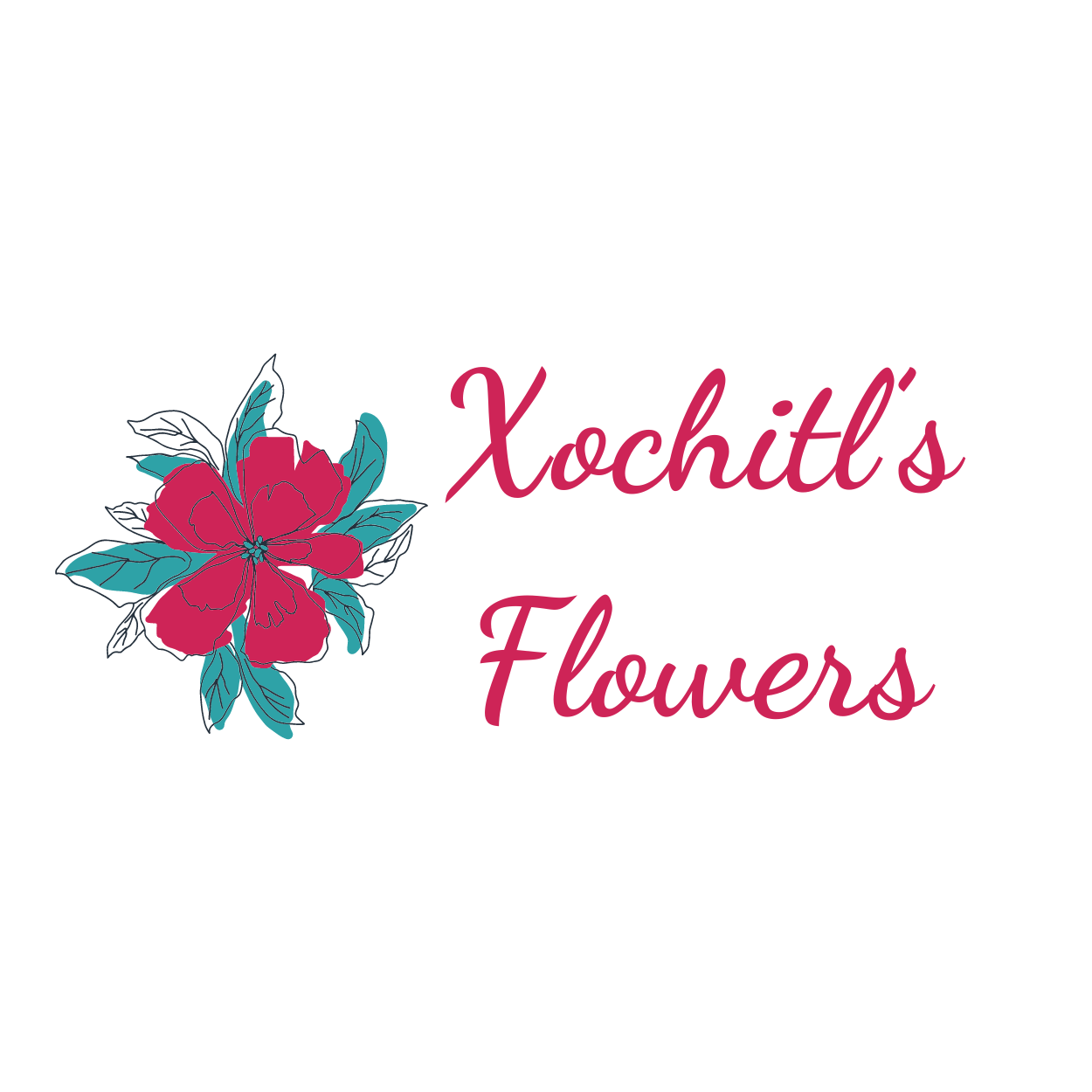Standard carnations (Dianthus caryophyllus) are celebrated for their classic beauty and enduring charm. As one of the most popular and versatile flowers in the floral world, standard carnations have a rich history and a broad range of applications. From their vibrant colors to their role in floral arrangements and cultural ceremonies, these flowers continue to captivate enthusiasts and professionals alike. This article explores the physical characteristics, cultivation, care, and significance of standard carnations, highlighting why they remain a timeless favorite.
Physical Characteristics
Flower Structure
Standard carnations are known for their distinctive bloom structure. Each flower features a single large bloom with fringed, ruffled petals that create a textured appearance. The petals are arranged in layers, giving the flower a full and dense look. The blooms can vary in size, but they typically measure between 2 to 4 inches in diameter, making them a prominent feature in floral arrangements.

Color Variations
One of the most appealing aspects of standard carnations is their wide range of colors. Common hues include vibrant red, pure white, soft pink, sunny yellow, and deep purple. Each color carries its own symbolism and significance, adding to the flower’s versatility. Rare and unique color variations, such as bi-colored or speckled blooms, are also available, providing additional options for floral designs.
Plant Size and Growth Habit
Standard carnations generally grow to a height of 12 to 18 inches, with a spread of about 12 inches. They exhibit a bushy growth habit, with multiple stems emerging from a central base. The plant forms a compact mound of foliage, which supports the large, showy blooms. As the plant matures, it continues to produce new flowers, ensuring a long-lasting display.
Varieties of Standard Carnations
Single Bloom Varieties
Single bloom standard carnations are the most common type, characterized by a single large flower per stem. Popular varieties include ‘Chabaud’ and ‘Coral Reef,’ known for their vibrant colors and striking appearance. These cultivars are favored for their classic look and are often used in bouquets and centerpieces.
Double Bloom Varieties
Double bloom standard carnations feature multiple layers of petals, giving them a fuller and more intricate appearance compared to single bloom types. Varieties such as ‘Diana’ and ‘Picotee’ are well-known for their double blooms, adding richness and depth to floral arrangements. These carnations are often used to create more elaborate and textured designs.
Cultivation and Care
Planting Standards
To ensure successful growth, standard carnations should be planted in well-drained soil with a neutral to slightly alkaline pH. The soil should be rich in organic matter to support healthy root development. When planting, space the seeds or transplants about 12 inches apart to allow for adequate air circulation and growth.
Growth Requirements
Standard carnations thrive in full sunlight, requiring at least 6 hours of direct light each day. They prefer a moderate climate with temperatures ranging from 60 to 75 degrees Fahrenheit. In regions with extreme temperatures, consider providing some shade during the hottest part of the day.
Watering and Fertilization
Regular watering is crucial for standard carnations, but overwatering should be avoided to prevent root rot. Water the plants when the top inch of soil feels dry, ensuring that the water reaches the root zone. Fertilize carnations every 6-8 weeks with a balanced fertilizer to promote vigorous growth and abundant blooms.
Pruning and Deadheading
Pruning and deadheading are essential for maintaining the health and appearance of standard carnations. Remove spent flowers regularly to encourage the production of new blooms and prevent the plant from becoming leggy. Pruning also helps maintain the plant’s shape and promotes a fuller, bushier growth habit.

Common Issues and Solutions
Pests and Diseases
Standard carnations can be susceptible to pests such as aphids and spider mites, which can cause damage to the foliage and blooms. Regular inspection and appropriate treatments, such as insecticidal soap or neem oil, can help manage these pests. Common diseases include root rot and powdery mildew. Ensuring proper soil drainage and avoiding overhead watering can prevent these issues.
Troubleshooting Tips
If carnations exhibit signs of wilting or yellowing leaves, it may indicate problems with watering or nutrient deficiencies. Adjust watering practices and consider using a balanced fertilizer to address these issues. Proper plant care and maintenance are key to preventing and resolving common problems.
Uses and Significance
Floral Arrangements
Standard carnations are a staple in floral design due to their versatility and long-lasting blooms. They are commonly used in bouquets, centerpieces, and corsages. Their wide range of colors allows them to complement other flowers and greenery, making them suitable for various occasions, from weddings to corporate events.
Symbolism and Cultural Importance
Carnations hold symbolic meanings associated with different colors. Red carnations signify love and admiration, while white carnations represent purity and good fortune. Pink carnations convey gratitude and remembrance. These symbolic meanings make standard carnations a popular choice for personal and ceremonial use.
Economic Value
Standard carnations play a significant role in the floral industry, contributing to both commercial and home gardening markets. Their popularity and demand drive a thriving market for cut flowers and plants. Breeders continue to develop new cultivars, further enhancing their economic value and appeal.
Notable Cultivars and Varieties
Classic Cultivars
Some well-known standard carnation cultivars include ‘Chabaud,’ known for its elegant ruffled petals, and ‘Coral Reef,’ celebrated for its vibrant coral color. These classic varieties have established a strong presence in the floral market due to their consistent quality and beauty.
New Introductions
Recent breeding innovations have introduced new standard carnation cultivars with unique attributes. Varieties such as ‘Diana’ and ‘Picotee’ showcase double blooms and distinctive color patterns, offering fresh options for floral designers and gardeners. These new introductions continue to expand the possibilities for using carnations in various applications.
Conclusion
Standard carnations embody a timeless elegance that has secured their place as a favorite flower in gardens and floral arrangements. Their vibrant colors, diverse varieties, and enduring appeal make them a versatile choice for any occasion. By understanding their characteristics, cultivation needs, and symbolic meanings, enthusiasts and professionals can fully appreciate the beauty and significance of standard carnations. Whether used in a bouquet, a centerpiece, or a garden display, standard carnations remain a cherished flower, celebrated for their classic charm and versatility.
